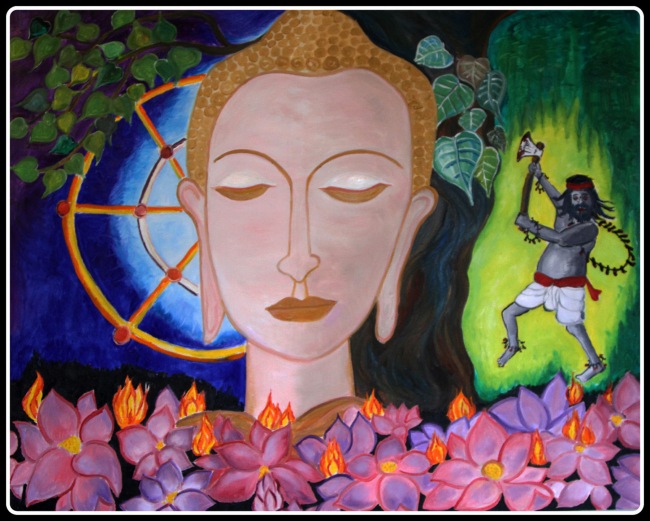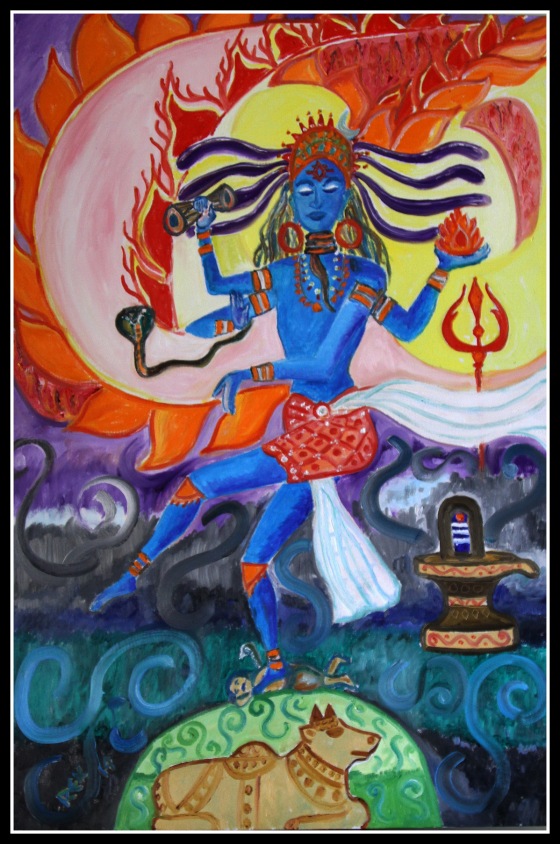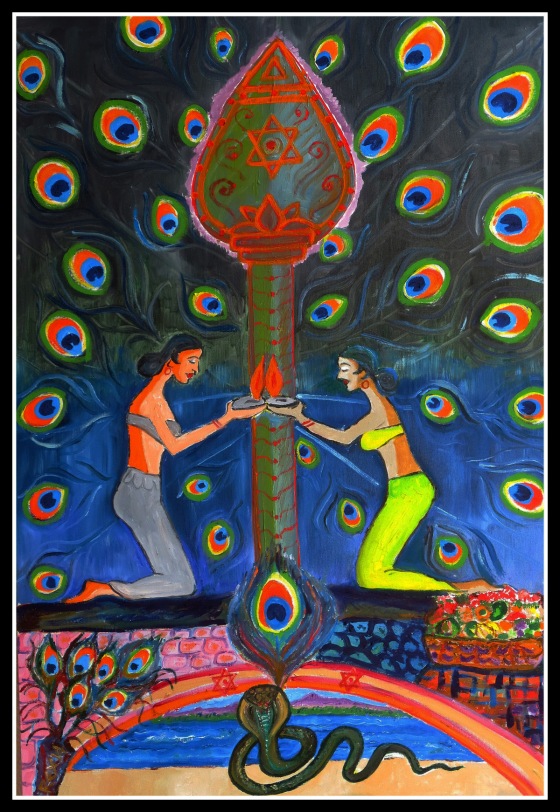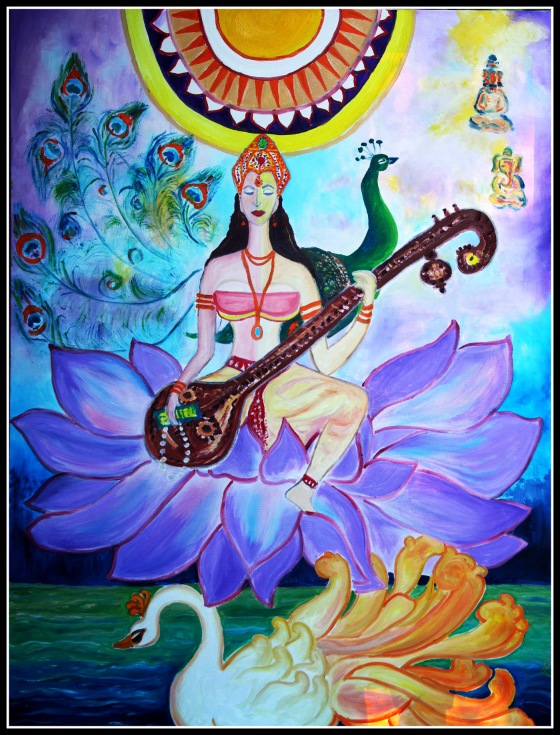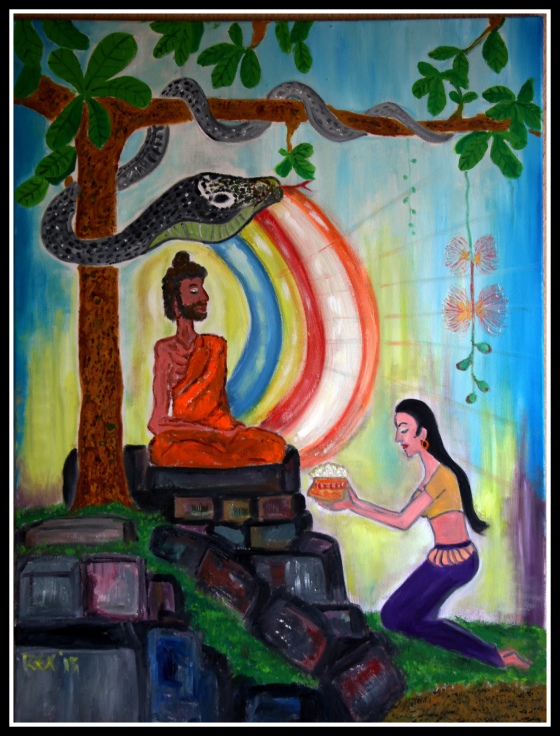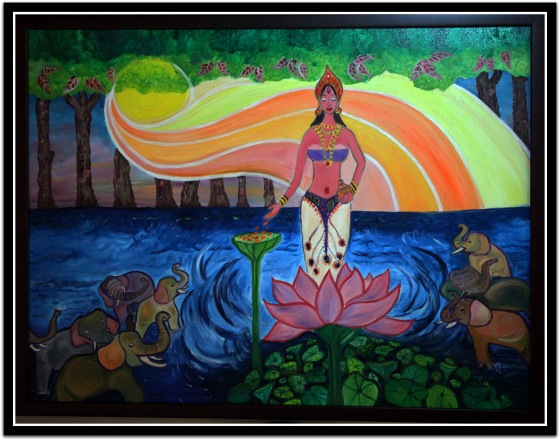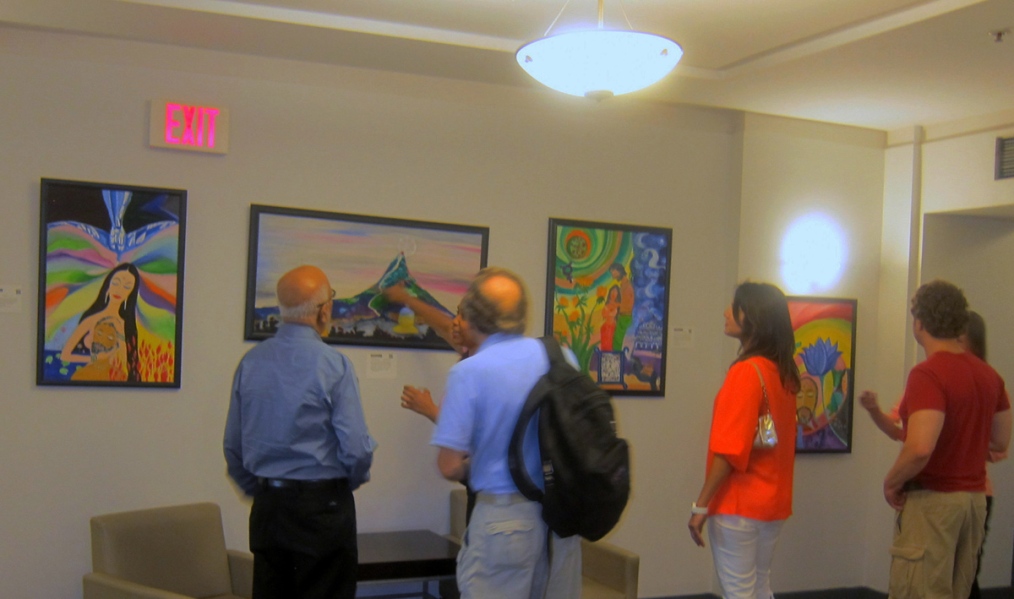
This painting is inspired by the mystic pre-historic petroglyph known as “Sakwala Chakra” located at Isurumuniya in the sacred city Anuradhapura, North Central Sri Lanka.
Sakwala Chakra begs the question whether the ancient Sri Lankan ruler Ravana who is credited with superhuman powers has had any alien connection? If so was it done through a stargate link ? Sounds incredible. But this unique stone inscription may shed some light on this mystery.
The petroglyph is claimed to have been created at least 5000 years ago, around the same time Ravana ruled Lanka. Some believe Sakwala Chakra to symbolize a stargate with inter-dimensional potential. Similar inscriptions are reportedly found at Abu Ghurab close to the Pyramid of Giza in Egypt and as star codes in Chichen Itza in Mexico.
Besides adding perspective to the deftly inscribed stone carving of what seems like a key to a cosmic gateway, the painting also portrays the stone carving of two unidentified figures that can also be seen nearby at Isurumuiya.

